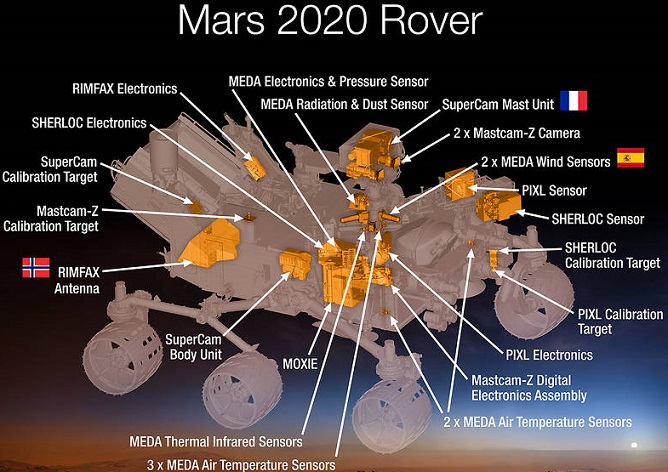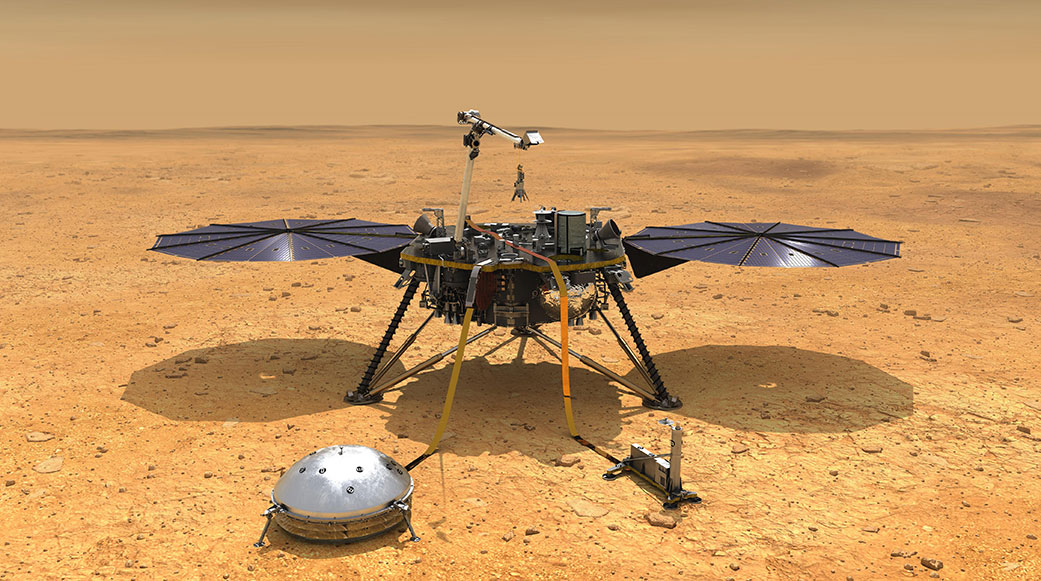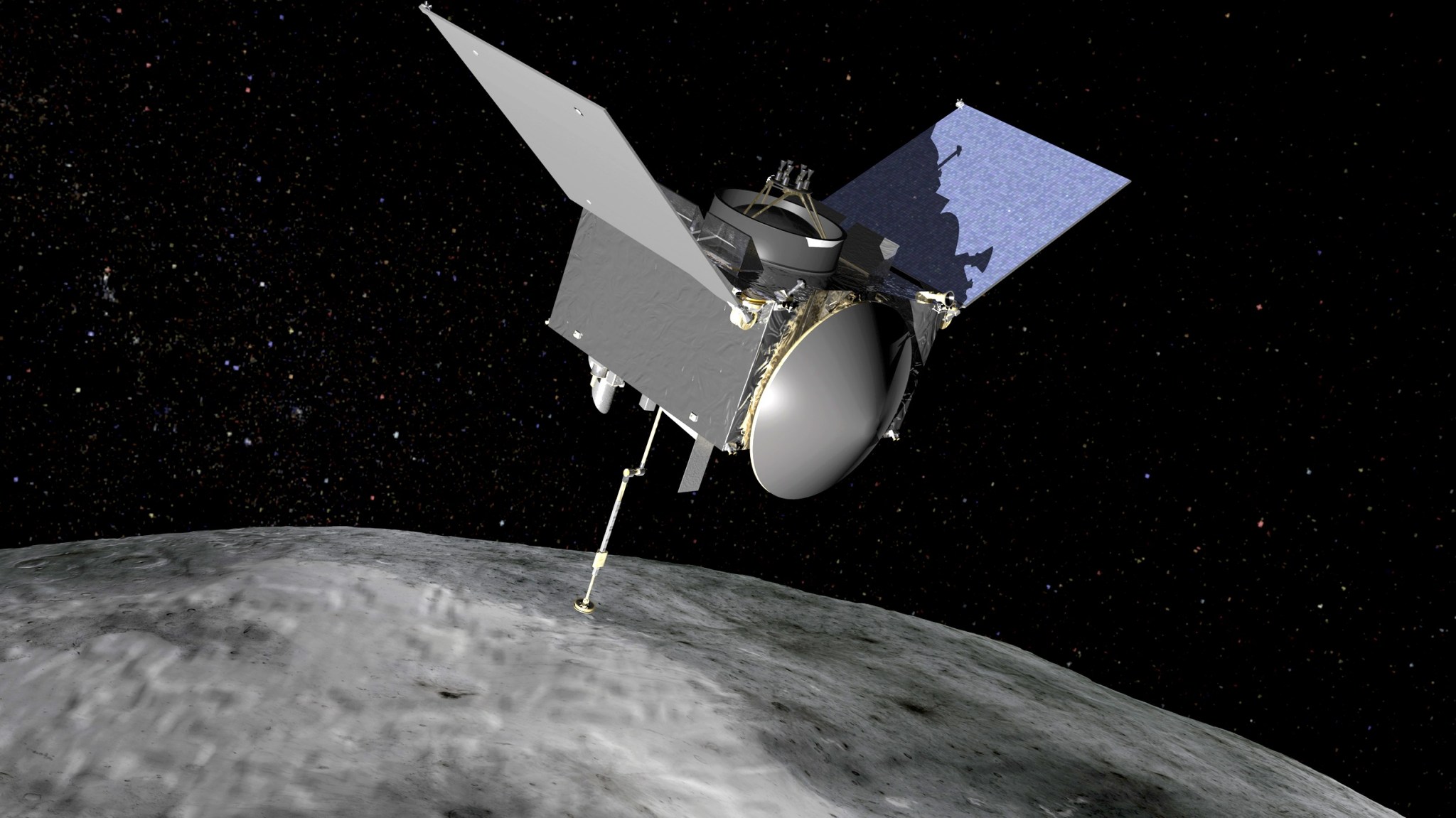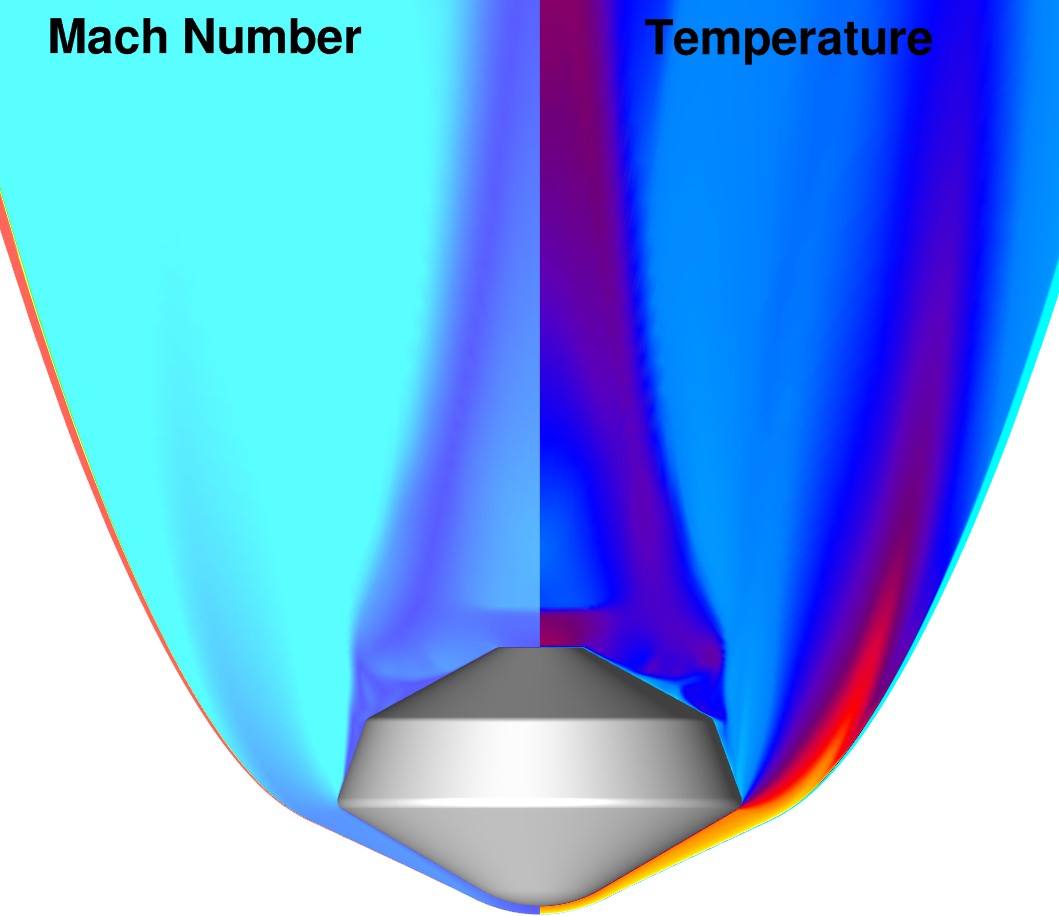NASA’s Science Mission Directorate and the nation’s science community use space observatories to conduct scientific studies of the Earth from space to visit and return samples from other bodies in the solar system, and to peer out into our Galaxy and beyond.
Advanced Supersonic Parachute Inflation Research and Experiments (ASPIRE)
The Advanced Supersonic Parachute Inflation Research and Experiments (ASPIRE) project is investigating the supersonic deployment, inflation, and aerodynamics of Disk-Gap-Band (DGB) parachutes in the wake of a slender body. The parachutes to be tested are full-scale versions of the DGBs used by the Mars Science Laboratory in 2012 and planned for NASA’s Mars 2020 project and will be delivered to targeted deployment conditions representative of flight at Mars by sounding rockets launched out of NASA’s Wallops Flight Facility. The parachutes will be tested in the wake of a slender payload whose diameter is approximately a sixth that of entry capsules used for Mars missions. Models of the deployment, inflation, and aerodynamic performance of the parachutes are necessary to design key aspects of the experiment, including: determining the expected loads and applicable margins on the parachute and payload; guiding sensor selection and placement; evaluating the vehicle trajectory for targeting, range safety, and recovery operations. In addition, knowledge of the differences in the behavior of the parachutes in the wake of slender and blunt bodies is required in order to interpret the results of the sounding rocket experiment and determine how they relate to expected performance behind blunt bodies at Mars. The Aerothermodynamics Branch is providing the computational fluid dynamics simulations used in the development of these models. Simulations of the wakes of blunt and slender bodies in supersonic flow have been conducted in order to investigate the differences in the flowfields encountered by parachutes deployed in both wake types. The simulations have allowed the project to investigate the fundamental differences between the sounding rocket tests and the flight of a DGB during a Mars mission and to assess the limitations of the sounding rocket test architecture for evaluating flight performance at Mars.
Mars 2020
With the great success of Curiosity, NASA will be launching a new scientific rover to Mars in 2020. The mission will investigate key questions about the habitability of Mars and the possibility of past and present life on the Red Planet. The rover will survey the natural resources and hazards on the planet’s surface for potential landing sites of future human expeditions to Mars. The rover will also collect interesting rock and soil samples and store them in special canisters. The goal is to return these cached samples back to Earth for further analysis. This mission will leverage on the successful architecture of NASA’s Mars Science Laboratory (MSL) mission, including the Mars Entry, Descent, and Landing Instrumentation 2 (MEDLI2) suite on the heatshield and backshell and much of its rover platform.
For the MSL mission, the radiative heating on the back shell of the spacecraft was assumed to be negligible during its entry into the Martian atmosphere. However, subsequent investigations have shown that this assumption might be incorrect. Aerothermal engineers are currently evaluating the heating environment of various Mars 2020 trajectories using state-of-the-art software (DPLR and NEQAIR) developed at NASA Ames Research Center. Results from these computer simulations are being used to determine if certain back shell elements might need to be resized, or if certain instruments need to be moved. Overall, the Mars 2020 mission will be an important step in NASA’s goal of human exploration of Mars.
InSight
InSight is a Discovery-class Science Mission to explore the geological and seismic evolution of Mars. The InSight lander will launch in May 2018, and enter in November 2018. The lander will be protected from atmospheric heating of a 5.4 km/s entry (12,000 mph) inside a 2.65m (8.7 ft) diameter entry vehicle.
The entry vehicle is derived from the successful Phoenix lander. The NASA Ames Aerothermodynamics Branch contributed to the InSight mission by performing aerothermal analysis of the entry heating with state-of-the-art computational fluid dynamics and radiative heating software. The Aerothermodynamics branch also leveraged experimental data on CO2 radiation from the NASA Ames EAST shock tube and the recent Mars flight data from MEDLI. Branch members used the combined computer simulations, experiments, and flight data to help design an entry vehicle that will survive the extreme heating of Martian entry. The Aerothermodynamics Branch also provided an independent assessment of how much thermal protection system material is needed on the front and back of the entry vehicle.
Origins, Spectral Interpretation, Resource Identification, Security, Regolith Explorer (OSIRIS-REx)
The OSIRIS-REx mission seeks to increase our understanding of asteroids and hopefully provide insights into some of humanity’s biggest questions by shedding light on the origin of life. As the leftover debris from the solar system formation process that began over four billion years ago, asteroids can teach us a lot about the history of our Sun and the formation of the planets. OSIRIS-REx is retrieving a soil sample from the asteroid Bennu, which is rich in carbon, a key element in organic molecules necessary for life. By studying an asteroid like Bennu, we may learn more about the precursors to the origin of life and the Earth’s oceans. It is also one of the most potentially hazardous asteroids to life as we know it as it has a relatively high probability of impacting the Earth late in the 22nd century. OSIRIS-REx will determine Bennu’s physical and chemical properties, which will provide critical data for future scientists in order to develop an effective impact mitigation framework.
Like all asteroids, there is no atmosphere, and as such, there is no heating imparted on the spacecraft as it arrives at Bennu. However, when OSIRIS-REx returns home with its precious cargo of asteroid samples, it will be one of the fastest human made objects to enter Earth’s atmosphere; even faster than a lunar return mission, such as Apollo. The Aerothermodynamics Branch at NASA Ames Research Center is responsible for making sure OSIRIS-REx returns safely to the Earth’s surface by performing aerothermal analysis to calculate the heating the vehicle will experience during its high speed re-entry into Earth’s atmosphere. These high fidelity heating calculations are then used to inform the design and fabrication of the thermal protection system, which includes the heat-shield.
Finally, asteroids like Bennu contain natural resources such as water, organics, and precious metals. Future space exploration and economic development will rely on asteroids for these precious materials. Asteroids may one day fuel the exploration of the Solar System by robotic and manned spacecraft.
Asteroid Threat Assessment Project (ATAP)
Explosions, thermal radiation, impact cratering, tsunamis, and even climate change can be caused by an asteroid entering the Earth’s atmosphere, causing major damage to Earth and its inhabitants. NASA’s Planetary Defense Coordination Office (PDCO) has tasked ATAP with advancing our ability to predict the potential damage caused by asteroids.
The Aerothermodynamics Branch is involved with many tasks of ATAP. Typically, asteroids will break-up as they penetrate deeper into the atmosphere. Understanding when they break-up, as well as how the pieces move apart is of critical importance to predicting the damage that an asteroid impact might potentially cause. Research is currently being performed in the branch to better understand the complex aerodynamic interactions between multiple bodies in hypersonic flow, and thereby inform models for the dispersal of fragments.
Finally, asteroids – unlike spacecraft – when they enter the atmosphere lose a significant percentage of their mass to ablation. Recent efforts have focused on developing new simulation tools capable of coupling together the complex aerothermodynamics to the ablation (vaporization and melting) to provide more accurate predictions of the mass lost during atmospheric entry.
Dragonfly
Dragonfly is a proposed spacecraft and mission that would send a mobile robotic rotorcraft lander to Titan, the largest moon of Saturn, in order to study prebiotic chemistry and extraterrestrial habitability at various locations. Titan is unique in having an abundant, complex, and diverse carbon-rich chemistry on the surface of a water-ice-dominated world with an interior water ocean, making it a high-priority target for astrobiology and origin of life studies. The dense, calm atmosphere and low gravity make flying an ideal means to travel to different areas of the moon. This revolutionary mission concept would provide the capability to explore diverse locations, 10s to 100s of kilometers apart, to characterize the habitability of Titan’s environment, to investigate how far prebiotic chemistry has progressed, and even to search for chemical signatures that could be indicative of water-based and/or hydrocarbon-based life. The mission was proposed in April 2017 to NASA’s New Frontiers program by the Johns Hopkins Applied Physics Laboratory. In December 2017, it was selected as one of two finalists (out of twelve proposals) to further refine the mission’s concept. NASA Ames Research Center is partnering with NASA Langley Research Center as the leads for the Dragonfly’s entry system and are tasked with delivery of the completed aeroshell. Among other activities, the Aerothermodynamics Branch at NASA Ames Research Center is responsible for the aerothermal analysis, thermal protection system (TPS) sizing, engineering science investigation (ESI), and providing the lead entry engineer.
You can visit dragonfly.jhuapl.edu for more information on Dragonfly.

































